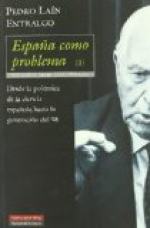|
This section contains 8,765 words (approx. 30 pages at 300 words per page) |

|
SOURCE: Bieder, Maryellen. “Gender and Language: The Womanly Woman and Manly Writing.” In Culture and Gender in Nineteenth-Century Spain, edited by Lou Charnon-Deutsch and Jo Labanyi, pp. 98-119. Oxford: Clarendon Press, 1995.
In the following essay, Bieder examines the ways in which women writers in late nineteenth-century Spain maneuver and reposition their writing within gender boundaries.
In the nineteenth century, male and female literary figures move in separate spheres, and the labels used to designate their activities meld the author's gender with the written product. The most common gendered pairs of words in the Spanish language to identify authors are poeta/poetisa [poet/poetess], literato/literata [man of letters/literary woman], and, less frequently, escritor/escritora [writer/woman writer]. This binary division displays the gender of the writer but also implicates writing itself. Since masculine cultural forms constitute the norm, the work of a female literata or poetisa represents...
|
This section contains 8,765 words (approx. 30 pages at 300 words per page) |

|


